|
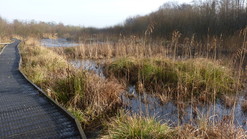
Funded by EU LIFE and supported by Welsh Government, LIFEquake is a five-year project which aims to restore peatland,quaking bogs and their wider supporting wetland landscapes to favourable conservation status. Quaking bogs’ – so called because when conditions are right, the ground ‘quakes’ underfoot.
Delivered in partnership by NRW, Pembrokeshire Coast National Park, Snowdonia National Park and the National Trust.
The project will focus on seven Special Areas of Conservation – Crymlyn Bog, North West Pembrokeshire Commons, Preseli, Rhos Goch, Corsydd Eifionydd, Gweunydd Blaencleddau and Cors Caron.
Peatland is the most valuable land resource in Wales as it stores 30% of land-based carbon. Covering about 4% of Wales, it is estimated that 90% of Welsh peatland is in a deteriorating condition and emitting greenhouse gasses that contribute to climate change.
The habitat has been assessed as ‘unfavourable’ at all selected sites. Such conditions are often caused by the land being over-grazed by animals. In some cases, insufficient grazing has led to important plants being smothered by dominant or invasive species. Other factors affecting the sites are abandonment of land management, poor drainage and widespread pollution.
Read more about the LIFEquake Project here
|
|
|
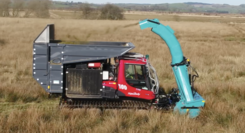
The project will address poor water conditions on the seven sites by restoring historical drainage and flow regimes – in some cases bringing more water onto a bog, and in others removing it.
Mowing, scraping and excavation to remove vegetation and undesirable invasive species currently smothering the important plants and mosses that create these ‘quaking bogs’.
65 km of fencing and other infrastructure will be installed across the sites which will allow the right levels of sustainable grazing to take place.
The project will develop and implement monitoring techniques to measure the effectiveness of restoration and management techniques for transition mires and quaking bogs and raise levels of understanding and appreciation amongst the public, local land managers (including farmers) and other stakeholders of the importance of transition mires, quaking bogs.
|
|
|
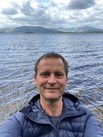 |
|
I’m Matthew, the Project Manager for the LIFEquake Project. This is such an important project because we will be restoring peat bogs into good condition so that they can support a wealth of wildlife. By looking after nature, we look after ourselves, as we all depend on a healthy natural environment. Well-managed wetland helps store carbon, contributing to Wales' fight against climate change. |
|
|
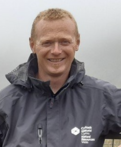
I’m Gareth, the Senior LIFEquake Project Officer. LIFEquake will also address issues including invasive species, pollution, and the impact of 200 years of heavy industry to protect these habitats for declining species including the Fen Raft Spider and Marsh Fritillary Butterfly. I’m extremely proud to be a part of this important project and am excited to see the outcomes the LIFEquake team can achieve.
|
|
|

I’m Mark, LIFEquake Communications & Engagement Officer. My role is to tell the story of this wonderful project. I look forward to learning about the fascinating world of peatland restoration and am excited to share this learning with others. I’ll be taking our messages to a number of events and engaging with communities and stakeholders to ensure that everyone understands the importance of these habitats, are actively involved in their maintenance and given every opportunity to fully enjoy them.
|
|
|
Hello, I’m Vicky. I am the LIFEquake Project Officer based in Pembrokeshire. Having been brought up in Pembrokeshire I am really looking forward to working on some fantastic sites near St Davids and Mynachlog-ddu. A lot of my work will be focussed on facilitating better grazing on the sites, which will keep strong vigorous vegetation under control and allow smaller more delicate plants to thrive creating more species diversity and a better mosaic of habitats. |
|
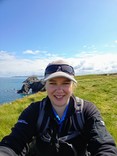 |
|
|
 |
|
Hi I'm Dan, LIFEquake Project Officer in North Wales for our four sites in Eifionydd. The wider landscape of these sites are all of great importance to support habitats that are home to metapopulations of marsh fritillary butterflies. The role is special to me because it gives me the opportunity to directly contribute to nature conservation via the medium of Welsh and within the region that I was born and raised in. |
|
|
|
Hi, I'm Catherine, the Assistant LIFEquake project officer. I have always loved the outdoors and spend most weekends walking and exploring our wonderful countryside and coastal paths. As someone who is very passionate about the environment, the LIFEquake project is a perfect role to assist with the restoration transition mires and quaking bogs around Wales.
|
|
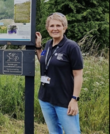 |
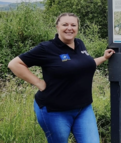 |
|
Hello, I am Sarah, I am the Finance and Administration Officer for the project. I am so excited to be working on the LIFEquake project, especially because peatland restoration is so important for reducing greenhouse gas emissions and improving wildlife habitat. I live in Swansea so am especially proud that LIFEquake will be making such a focus on restoring the Crymlyn Bog site and working with communities close to my home. |
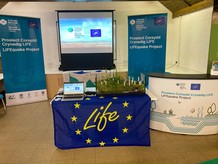
In early October we were delighted to host the official project launch at Crymlyn Visitor Centre in Swansea – one of the seven sites we’ll be focussing on during LIFEquake.
Our launch coincided with what was a momentous week in terms of climate change. Welsh Government had made a bold and exciting pledge to triple their peatland restoration targets at the beginning of the week and Minister for Climate Change, Julie James confirmed that intention by attending our LIFEquake launch on the Friday.
Julie said,
“I am delighted to be able to attend the launch of this important new LIFE project and that Welsh Government is able to contribute over £1.7m towards it over the next four years.
“It will make an important contribution to our ambitious plans of reaching the net zero 2050 target of 45,000 ha of peatland restored. It will also help expand and accelerate our Nature Networks Programme to improve the condition and connectivity of our protected sites network and to restore the condition of key habitats to ensure plants and animals are more resilient to climate change”.
Read the LIFEquake Project launch press release here
A video was shown at our launch to give an overview of the Crymlyn Bog site and the plans LIFEquake has to bring the habitat back to ‘favourable’ status.
Watch this video of Martyn Evans endorsing the LIFEquake project.
|
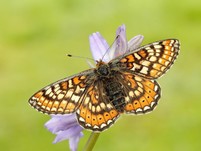
A healthy, functioning quaking bog is ideal habitat for the marsh fritillary butterfly and a major focus of LIFEquake is to restore and maintain the conditions to help this particular species thrive. Initial work has taken place by our LIFEquake Project Officers and partners across Wales to carry out surveys to assess the current numbers and locations of existing marsh fritillary populations.
A key indicator of the marsh fritillary’s potential to inhabit quaking bogs is the presence of the devil’s bit scabious plant. This is the key food source for the caterpillars who also begin their lives in ‘webs’ that are found on the leaves of the plant. Phase one of the marsh fritillary work is to carry out web surveys.
Here’s a short video of our LIFEquake Officer Vicky and colleagues carrying out marsh fritillary web surveys in Pembrokeshire
|
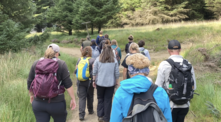
A huge factor in peatland restoration is establishing and maintaining the right flow of water to create the right conditions. In some cases quaking bogs need more water directed towards the site in order to flourish, in others it’s a case of draining excess water away from the habitat.
Flow of water can be responsible for transporting excess nutrients onto the bog that feed problematic or invasive species that have a detrimental effect on the important plants - like sphagnum mosses – that actually form the bog. LIFEquake will be carrying out extensive hydrological surveys of the project sites ahead of any planned works to asses whether water needs to be directed onto the bog or drained from it.
In readiness for these surveys, members of the LIFEquake team attended a fantastic peatland hydrology training day delivered by Dr Rob Lowe and funded by our friends at Lost Peatlands Project.
Watch this short video of the Peatland Hydrology Training Day
|

The LIFEquake team visited another fantastic LIFE funded peatland restoration project in late October. Marches Mosses BogLIFE, which is soon to end, hosted us and gave us a very informative tour of their project sites - Fenn's, Whixhall and Bettisfield Mosses which are located in Shropshire and cross into both England and Wales.
It was great to share ideas and gain inspiration from the Marches Mosses team...and also to discuss the many challenges in restoring peatland habitats.
You can read more about the Marches Mosses project here.
Our project team also took the opportunity to return home via a visit to one of our LIFEquake project sites - Rhos Goch, near Builth Wells. Keep an eye out for forthcoming newsletters where we'll detail the works planned for Rhos Goch.
Here's a short video of the Marches Mosses visit.
|
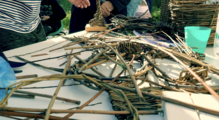
The Crymlyn Bog Visitor Centre regularly hosts a local community group The Kilvey Woodland Volunteers. The group engage in a wide variety of ancient, woodland crafts and also contribute a great deal of time and care to maintain the pathways on Kilvey Hill - which is situated directly behind the visitor centre at Crymlyn.
The LIFEquake team have already built a close working relationship with the Kilvey Volunteers and there is a strong, shared desire to collaborate on a number of important conservation tasks around the Crymlyn site over the coming years.
On Sunday 16th October, Crymlyn hosted the Kilvey Volunteer group's latest community event where visitors had the opportunity to participate in a variety of woodland art and craft activities - as well as roasting chestnuts that had come from Kilvey Hill itself!
Here's a short video of the event.
|
Search 'LIFEquakingbogs' on Facebook and Twitter.
 |
|
This work has been funded by an EU LIFE programme grant and Natural Resources Wales, Snowdonia National Park, Pembrokeshire County National Park and Welsh Government (LIFE20 NAT/UK/000137). |

|
|
|
|
|